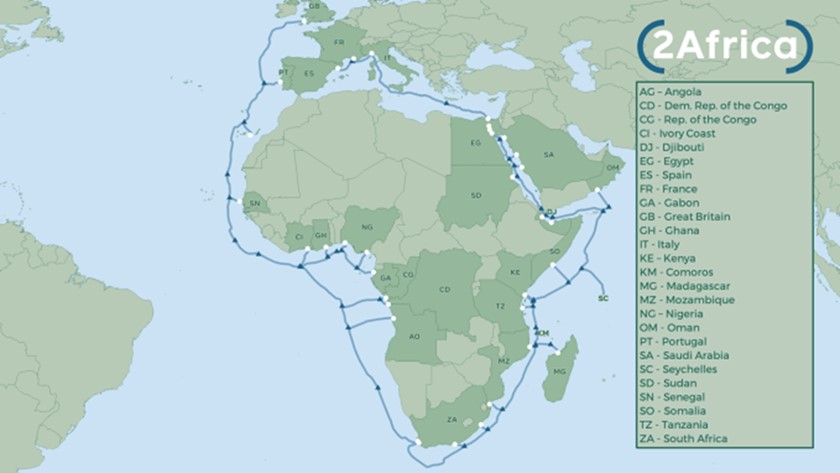By Matt Walker
The webscale sector of network operators spent nearly $1 trillion on R&D in the last decade. A rising portion of that R&D has targeted innovations in how their networks are built and operated. As a group, webscalers invest an average of 10% of revenues into R&D, not far below pure play network-focused vendors like Cisco (12.9%), Ericsson (17.1%), and Nokia (18.7%), who, by design, are in the business of creating products for others to deploy.
For years there has been speculation about whether webscalers would eventually commercialize their innovations and sell them to third parties. In general, this has not happened. The biggest webscalers are rivals in cloud services and other areas, and view their network technology as a key differentiator. They have spent lavishly to build out their R&D teams, and that has produced innovations in multiple areas. The most important ones relate to data center chips, servers, and power/cooling; others involve streaming platforms, network automation, traffic analytics, LEO satellites, IoT operating systems, artificial intelligence, autonomous driving technology, cloud gaming and subsea cable networks. Some webscalers discuss these innovations at conferences, in part to get industry support for furthering their advances. However, while webscalers spend as much as vendors on tech development and have developed loads of IP, most have not functioned as vendors. They keep their secret sauce in house. Amazon’s self-developed network switch is just one of many examples.
There is one partial exception to this rule: Facebook. It spends about 20% of revenues on R&D, twice the webscale average, and has long been more open to sharing innovations. This is not altruism. It’s partly due to the company’s interest in lowering costs and standardizing platforms, and also to its primary goal of rapidly increasing the reach of its network to more users. Facebook was the early driver behind the Open Compute Project (OCP) and the Telecom Infra Project (TIP). A good chunk of Facebook’s R&D budget has targeted network connectivity-related projects. In early October, Facebook’s Connectivity group had a briefing for media & analysts to discuss several of these: Terragraph, a wireless technology; subsea cable and remote powering innovations; and, a robotic fiber installation device called Bombyx. Facebook’s usual practice with such innovations is to license them for free to third party manufacturers.
R&D budgets are the most visible metric of innovation, but webscalers can advance network infra technology in several ways: create new innovations for their own network, which are often then picked up by the rest of the industry (even telcos); share innovations with open source bodies like the OCP; license innovations for free to third parties; use their buying power to influence vendors to conduct R&D on their behalf; acquire promising startups; engage in joint development with other companies. Facebook does all of these.
- Table Of Contents
- Figure & Charts
- Coverage
- Visuals
Table Of Contents
- Summary (p. 2)
- Webscaler R&D averages 10% of revenues, many targets (p. 2)
- Data center chips are central focus for webscaler R&D (p. 4)
- Webscalers pushing the envelope in optics (p. 6)
- Facebook’s net infra contribution is important and growing (p. 9)
- Conclusions (p. 14)
- Appendix (p. 15)
- About MTN Consulting
- Terms of Use
Figure & Charts
Figure 1: R&D to revenue ratio for key webscalers, 2Q21 annualized period
Figure 2: Tech-related spending avenues for Tencent
Figure 3: Data center server layout
Figure 4: Webscalers’ backward integration in chip design
Figure 5: Optical transceivers in Google data centers
Figure 6: DCI today – open and disaggregated
Figure 7: Evolution of optical interconnect
Figure 8: Facebook’s OCP contributions through 2020
Figure 9: Facebook’s 10 year roadmap, circa 2016
Figure 10: Facebook-developed aerial fiber installation robot, Bombyx
Figure 11: Facebook-driven 2Africa cable system map
Coverage
Companies and organizations mentioned in this report include:
2Africa cable
AceAxis
Airspan
Alcatel Submarine Networks
Alibaba
Alphabet (including Google Cloud Platform, and Google Fiber)
Amazon (including Amazon Web Services, or AWS)
AMD
Amdocs
Ampere Computing
Apple
Apricot cable
Arista Networks
Axiata
Baicells
Baidu
BiFrost cable
Broadcom
Cambium
China Mobile
Ciena
Cisco Systems
Dent
Deutsche Telekom
Dunant cable
Echo cable
Edgecore Networks
Ericsson
Fabrinet
Facebook (including Facebook Connectivity)
Goldman Sachs
HPE
IBM
Inspur
Intel
ITU
Juniper Networks
Keppel T&T
MAREA cable
Mavenir
Microsoft (including Azure)
MikroTik
Mirantis
MTI
MTN Group
Nokia
NTT Data/Everis
NVIDIA
Open Compute Project
Oracle
Orange
Parallel Wireless
QCT
Qualcomm
Quanta
Rackspace
Radwin
Siklu
SK Telecom
Slamcore
stc
Telecom Egypt
Telecom Infra Project
Telkom Indonesia (Telin)
Telxius
Tencent
TSMC
ULC Technologies
University of Alabama
Vertiv
Vodafone
WIOCC
Visuals


